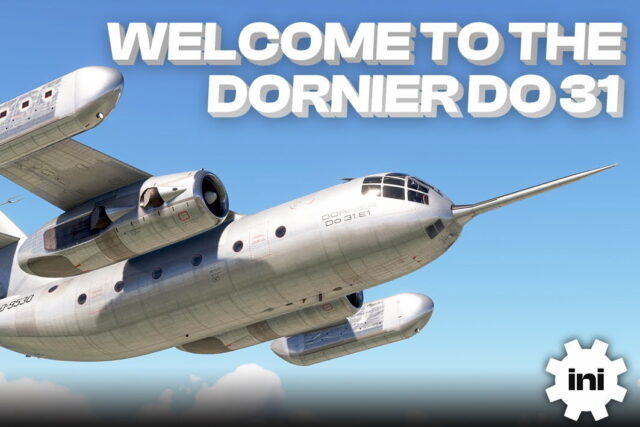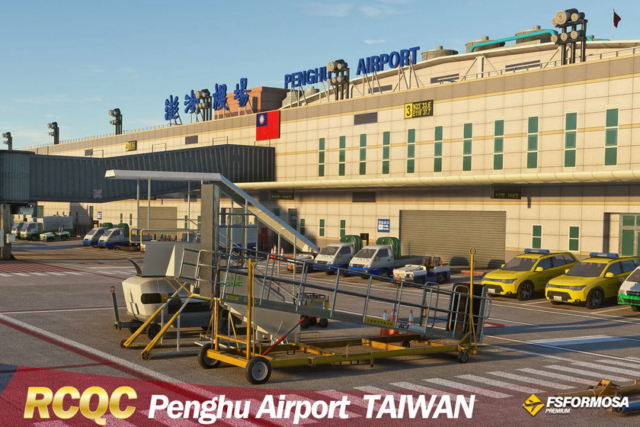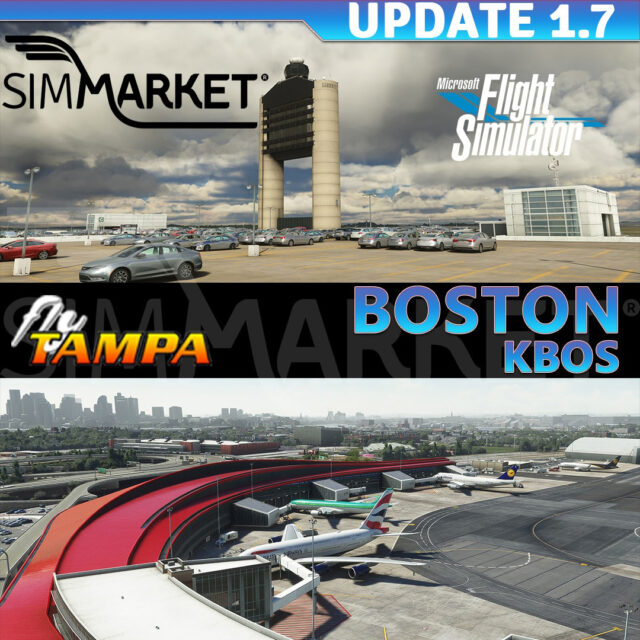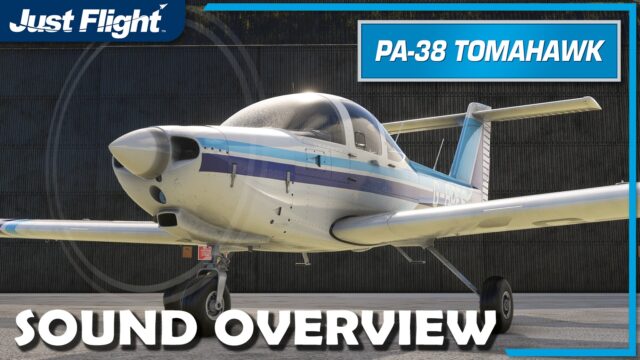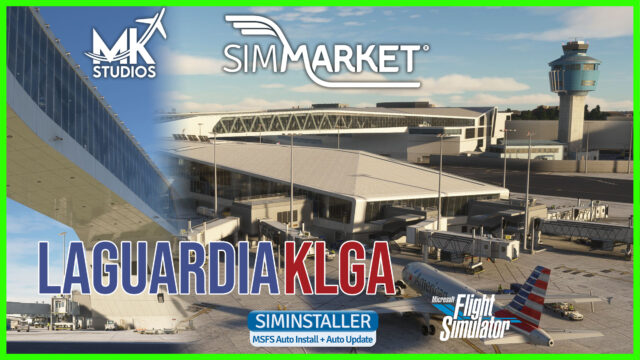
Aerosoft have just released their latest Mega Airport for FSX. Titled Zurich 2012 it is a detailed recreation of Switzerland’s largest international airport. The airport is located north of the large metropolitan city of Zurich which is on the north eastern tip of Lake Zurich.
The airport has gone through a number of major changes in the past decade. With the demise of Swissair in 2002 the airport saw a substantial drop in traffic. The airline has since been resurrected by Lufthansa which took it over and renamed it Swiss International Air Lines. Since then the level of traffic has been steadily increasing.
It has also seen a number of major expansions in the last decade; adding a new terminal as well as rebuilding of aircraft docks and parking areas. The airport is depicted in its latest configuration as it will be in 2012.
There are three runways at Zurich; 10/28 @ 8,202ft, 14/32 @ 10,827ft and 16/34 @ 12,139ft. The airport saw approximately 23 million passengers go through its facilities in 2010.
Installation
The installation for Aerosoft products is now a two step process; the first part is very familiar as it is the installer that has been around for quite a while and should be known to anyone who has purchased their products in the past. You launch the executable, add your registration information and the program does the rest. The final screen asks if you want to “Run the Launcher set up now”? This is where the second half of the process begins. It will either install the Aerosoft Launcher or if required update your current version. Once the Launcher has finished installing it will start and you will have the following screen on your desktop.
You will now need to activate the product; here again you will input your purchase info and then via an active internet connection your product will be activated.
You are now ready to fly the newly installed Zurich 2012 scenery.
Configuration
There are two configuration utilities with Zurich 2012; the traffic tool and the season tool. Both are accessible from within the newly created Aerosoft Zurich 2012 program group menu entry or the Aerosoft Launcher application.
The season tool is where you will pick what season you want the vegetation to reflect. Failing to match the vegetation to the simulator season will lead to mismatches between the trees and surrounding ground textures. In Zurich there are several small patches of ground where the textures are also controlled by this season tool. You should remember that the changes you make here affect all Aerosoft sceneries shown in the list.
The traffic tool allows you to enable or disable the AESLite animated traffic in the various locations of the scenery as shown on the map.
Documentation
Included with the Zurich scenery are two documents; a multi language product manual and a charts manual. The English portion of the manual is eleven pages long.
One of the first lines in the English manual reads “To fully enjoy the scenery “Nice X Cote d’Azur” we recommend the following:” Fortunately this was the only major typo I found. I see by their forum that this has now been corrected so anyone now purchasing the product will not have this error.
The majority of the manual, six pages worth is devoted to an in-depth description of the installation and activation process with the emphasis being the Aerosoft Launcher application.
The remainder of the manual lists system requirements, generalized airport information and some scenery specifics such as the fact the this addon depicts how the airport will look in 2012. The last page has brief descriptions on compatibilities with other products, use of AES and the season tool.
Again as I say with every addon it is always a good idea to read the manual; inevitably it will answer some question that pops up as you use the scenery.
The charts manual is quite comprehensive and up to date including all the necessary IFR charts to execute successful arrivals and departures at this airport. Parking guides are not yet available for the newest airport layout so they are not included.
Scenery
Aerosoft has a well deserved reputation of producing and distributing top notch products so I was not surprised by my findings. The differences between the FSX version of Zurich and this one were dramatic as expected. The scenery models the airport with a minimal area outside its perimeter.
This airport certainly deserves the moniker of mega airport. It did not take long to see that this is a very busy place. As the main hub for Swiss International Air Lines the tarmac was filled with lots of the familiar looking red and white cross tail logos.
Structures
The layout of the airport has the majority of buildings located between runways 10/28 and 16/34. It is here that you will find the main flight center with docks A and B, the freight terminal, general aviation and maintenance areas. The other docking area E is located on the north side of runway 10/28. Lastly there is a small cluster of buildings on the south west end of runway 34 that houses the fire fighting services and the airport authority technical services. The buildings are accurately located and have been recreated from the ground up with lots of little details that make them interesting and realistic looking.
The structures at Zurich that I found most interesting were the new flight center and dock E. Why; because both are modern looking buildings with large walls of transparent glass. The effect was eye-catching. These are probably the best examples I’ve seen up to now of transparency. True it is something that is best appreciated close up, when you taxi past one of these large glassed structures or are parked next to a jet way the perception of depth that you get makes it so much more realistic.
One thing about having buildings with so much glass the developers are presented with the challenge of having to model to a certain extent the interiors of these buildings. As part of my exploration I took some time to go inside. They were very sparsely modelled. If that is important to you then you will be disappointed. I was more interested in the view that I got from the various vantage points available from within these locations. To be able to experience a bit of what the passengers see was very interesting. I think it adds a whole new fun dimension to the airport even though it is not part of the flying experience.
Taking a look at other buildings within the airport grounds the quality is just as impressive. I thought that the colouring and addition of details to the structures all added up to help solidify this as a standout product.
Some examples of the types of details I am referring to are things like the open metal stairways on either side of the large glass front of the flight center, the slatted roof of dock E or the open roof top deck with the fencing and exposed roof supports on dock B. These are just a few of the ones I saw throughout the airport.
The jet ways are also very detailed and deserve to be mentioned for their quality. As you get in real close you can see the discolouration and seams in the concrete and you also have the control panel that can be used to manipulate the jet way.
What about the area located just outside of the airport? I have mixed feelings here. They modeled the multi level roadway that joins this series of large square structures to the circular entrance road and they did populate it with moving vehicular traffic so that was good. However when looking and comparing the buildings to those that are visible from the tarmac there is a difference. These buildings look flat, boxy and it appears that they used lower resolution images when modelling them.
Ground
Ground textures as expected were hi resolution throughout the entire airport. The hard surfaces were especially impressive. They did a great job at reproducing them so the look was very realistic, there are areas where there is discolouration and some signs of dirt and wear and tear  reinforcing the perception of having been subject to high levels of traffic.  The ground markings were also well done, as this is a large airport with multiple taxiways, docking areas and gates the markings can get quite complex but they manage to pull them off very convincingly.
The one part of the ground markings I thought could have been improved was the yellow center lines in the curves, some were very well done while others looked like a series of straight lines joined to make the curve.
The grass textures were very convincing and also appeared to be hi resolution textures. There were slight seasonal variations visible for the grass and full winter snow textures are included as well.
Objects and Vehicles
Objects and vehicles serve to bring the aircraft, runways and buildings together so the entire airport experience is realistic and believable. Day to day activities would not happen without them. I will make a blanket statement here; for the most part I was extremely happy with what I saw. The quality, quantity, variety and placement were all excellent. You can see in the screenshots some of the outstanding work they have done. Without naming too many you will see in my screenshots such things as freight containers, service vehicles, lighting of all types, barriers, fencing and so much more.
Something that I noticed and others have as well has to do with the wheels on some of the vehicles, they weren’t round but more of a hexagonal shape. I read that this was done to reduce the impact on frame rates. I am not sure how much of an impact this would make overall. It was only really noticeable when I was looking at the objects up close. Did it take away from the positive and immersive airport experience during normal flight operations; I would have to say no.
The airport is a very busy place and a good portion of that has to do with the vehicular traffic that is constantly moving about the tarmac and adjacent roadways. Thanks to the inclusion of AESLite there was plenty of traffic in both areas. There was also a nice variety as well. I was especially fond of the apron traffic, it was very interesting to watch as the different service vehicles and airport buses make their way around on the apron service roads. I did see a slight problem near the rwy 34 remote de-icing pad D13-D16 where the vehicle traffic would cut across the narrow grass strip.
The airport uses the Safedock A-VDGS (Advanced visual docking guidance system) which as the name implies is a system that provides visual guidance to the pilot for parking aircraft at a gate. Unlike other airports though the aircraft type was not displayed. The jet ways at Zurich do not move so I can’t comment on how accurate the system is with regards to parking for jet way connectivity but observing the aircraft from outside and judging the distance to the terminal it seemed to be doing a good job.
There is lots to see and lots going on here so there are bound to be a few problems. Here are a few that I found.
In the maintenance area there are several engine run up bays that are made up of concrete walls and large metal pipes to direct the exhaust upward and in a safe direction. For some reason they neglected to include holes for the exhaust to pass through to the pipes, the walls are solid.
The second area is with road tunnels. At the east end of dock E I observed vehicles disappear into the ground as they made their way into the tunnel and reappear as they came out. To me this was subpar for the scenery. I observed this same phenomena at another tunnel entrance near dock A.
Night
Being a large hub, night time operations are a big part of Zurich so a realistic night environment is a must. I went about exploring the airport with my main focus being lighting and how it was used. Based on my experiences with the scenery thus far I was expecting that they would be positive. I have to say that I was not disappointed at all. In fact the night time served to bring out some of the visual highlights that I had first noticed during the day, mainly the transparency of the large glassed walls of the flight center and dock E. In these two instances the interiors were much more visible making for some very nice visuals.
I found all of the various types of lighting to be very realistic. I liked how they conveyed the intensity of the light cast from the pole lights. It was as if the light was going through a slight haze in the air. The ground textures they use for the aprons also appear to show shadows cast by the jet ways.
All other forms of lighting I thought were very good as well; ground lighting, building exteriors and interiors. Overall, very well done and realistic.
Approaches
This is a large airport with the majority of traffic being commercial type aircraft capable of instrument landings. My main goal here was to experience the available ILS approaches. To do this I flew an Embraer 145 to runways 14, 16, 28 and 34. What I expected to find was that these approaches would take me to a successful landing and that is exactly what happened.

Performance
FSX performance was good overall. My experience remained fluid during all flights and any drops in frame rates I felt could be attributed to the large amount of AI aircraft traffic.
Final Thoughts
When you hear that Aerosoft have released a new airport it is a pretty safe bet that it will be worth getting. Zurich 2012 deserves to be recognized as another one in that category. There are minor problems but the airport is detailed, it is interesting and can offer the airline pilot or the casual flyer a location that will give them many hours of enjoyable flying.
My Ratings
Installer:Â Very good. Two part process but still easy to use. Requires an active internet connection to fully activate product.
Documentation: Very Good. Informative manual and full set of up to date charts.
Modelling: Very good. Detailed and realistic.
Extras:Â AESLite provides road and apron traffic. Traffic and season tool included.
Download Size: FSX 243Mb
Price: EUR 20.97 without VAT
Developer Homepage: http://www.aerosoft.com
SimMarket Purchase link: http://secure.simmarket.com/aerosoft-online-mega-airport-zurich-2012.phtml
Test System:
Intel i7 950 OC @ 4.2 Ghz, 6 Gb RAM, ASUS 480GTX w/1.5Gb video, Win 7 Ultimate 64, FSX w/acceleration, Ultimate traffic 2, REX Overdrive, GEXn, UTX, AES 2.11
Richard Desjardins


















































![Aerosoft – Frankfurt EDDF MSFS Preview [Video]](https://www.simflight.com/wp-content/uploads/2024/04/Aerosoft-Frankfurt-EDDF-MSFS-Preview-thumb.jpg)
